User Experience Laws and Fundamentals
Core Laws of UX
Chapter Overview
In UX, a solid understanding of human behavior has led to the formulation of “laws”—principles that guide designers in creating intuitive, satisfying experiences. Let’s explore some of the foundational laws of UX, with relatable examples to help you understand their real-world applications.
User experience (UX) design isn’t just about making things look good, it’s about making them work effortlessly for people. At its core, UX is rooted in psychology, behavioral science, and design principles that help create seamless interactions. Over the years, researchers and designers have identified fundamental “laws” of UX—guiding principles that explain how users think, behave, and interact with digital products.
Understanding these laws can help you design interfaces that feel natural, intuitive, and enjoyable. Whether you’re simplifying choices, making buttons easier to click, or ensuring consistency across experiences, these principles serve as a foundation for great design.
In this chapter, we’ll explore some of the most important UX laws, breaking them down with relatable real-world examples. By the end, you’ll see how these principles shape the way we design digital products—and how you can apply them to create user-friendly experiences.
Now, let’s dive into the core laws of UX…
1. Hick’s Law
The more choices available, the longer it takes to decide.
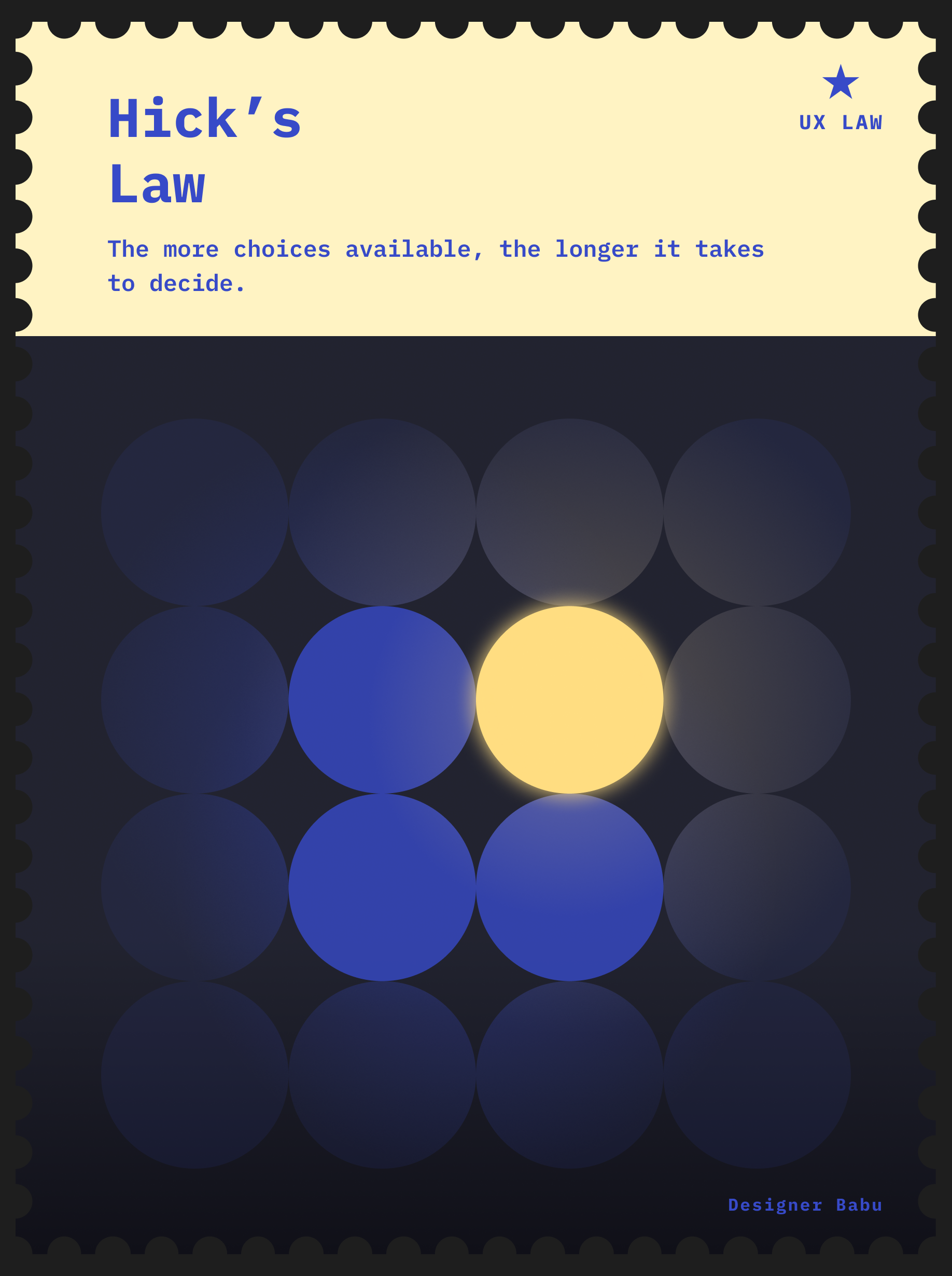
Imagine a small coffee shop with three options: black coffee, cappuccino, and latte. You quickly decide and place your order. Now, picture a larger café with twenty coffee options—Espresso, Mocha, Cortado, and more. With too many choices, decision-making becomes overwhelming and mentally taxing. Hick’s Law reminds us that in design, simplifying options can help users make faster, more confident decisions.
2. Fitts’s Law
The time to interact with an object depends on its size and proximity.
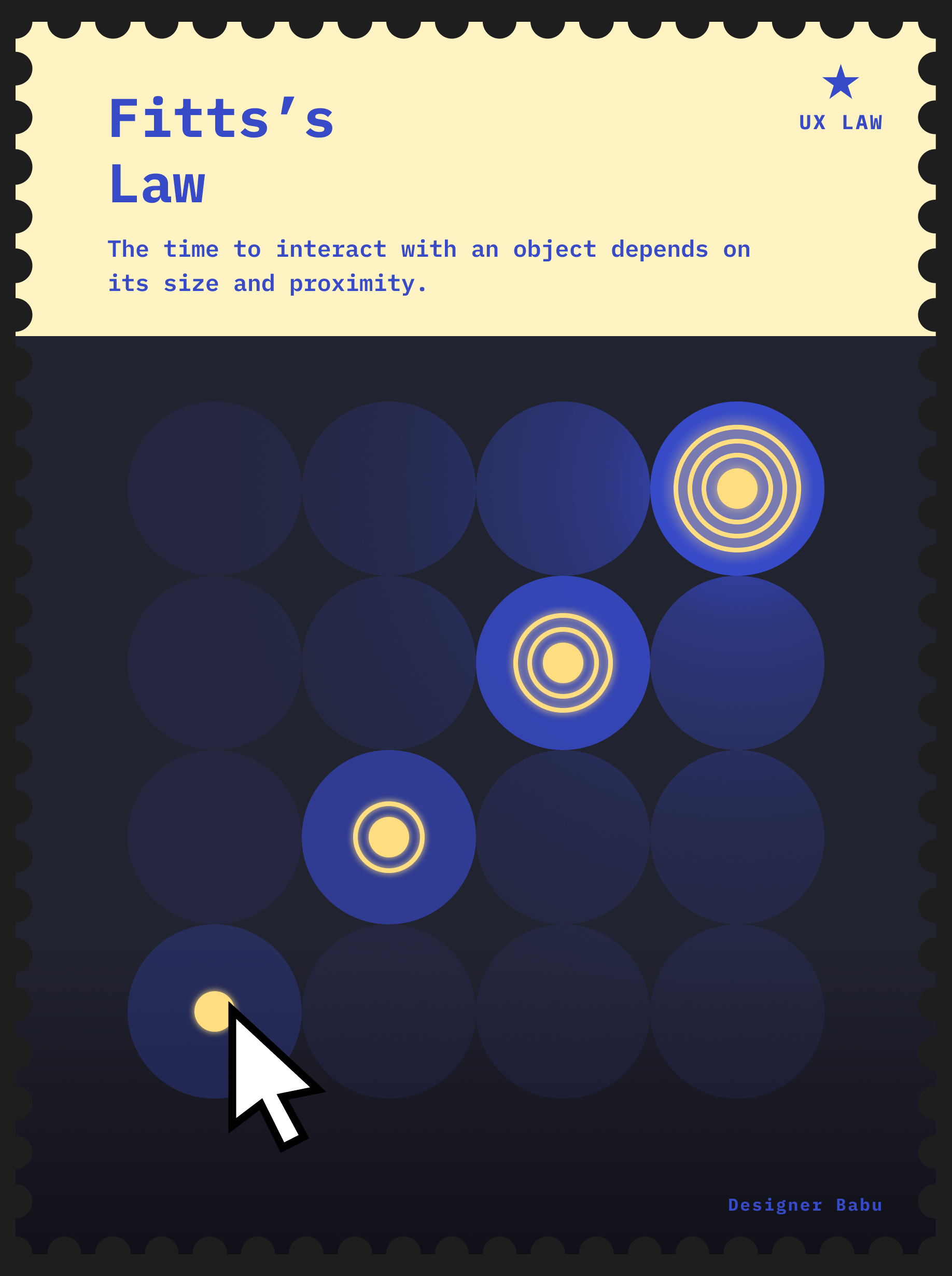
Picture a barista preparing drinks. If the grinder is right next to the espresso machine, it works quickly and efficiently. But if it’s far across the counter, each drink takes longer to make. Fitts’s Law tells us that the placement and size of interactive elements (like buttons) are essential; bringing them closer and making them larger can improve usability.
3. Jakob’s Law
Users expect consistency with other sites they use.
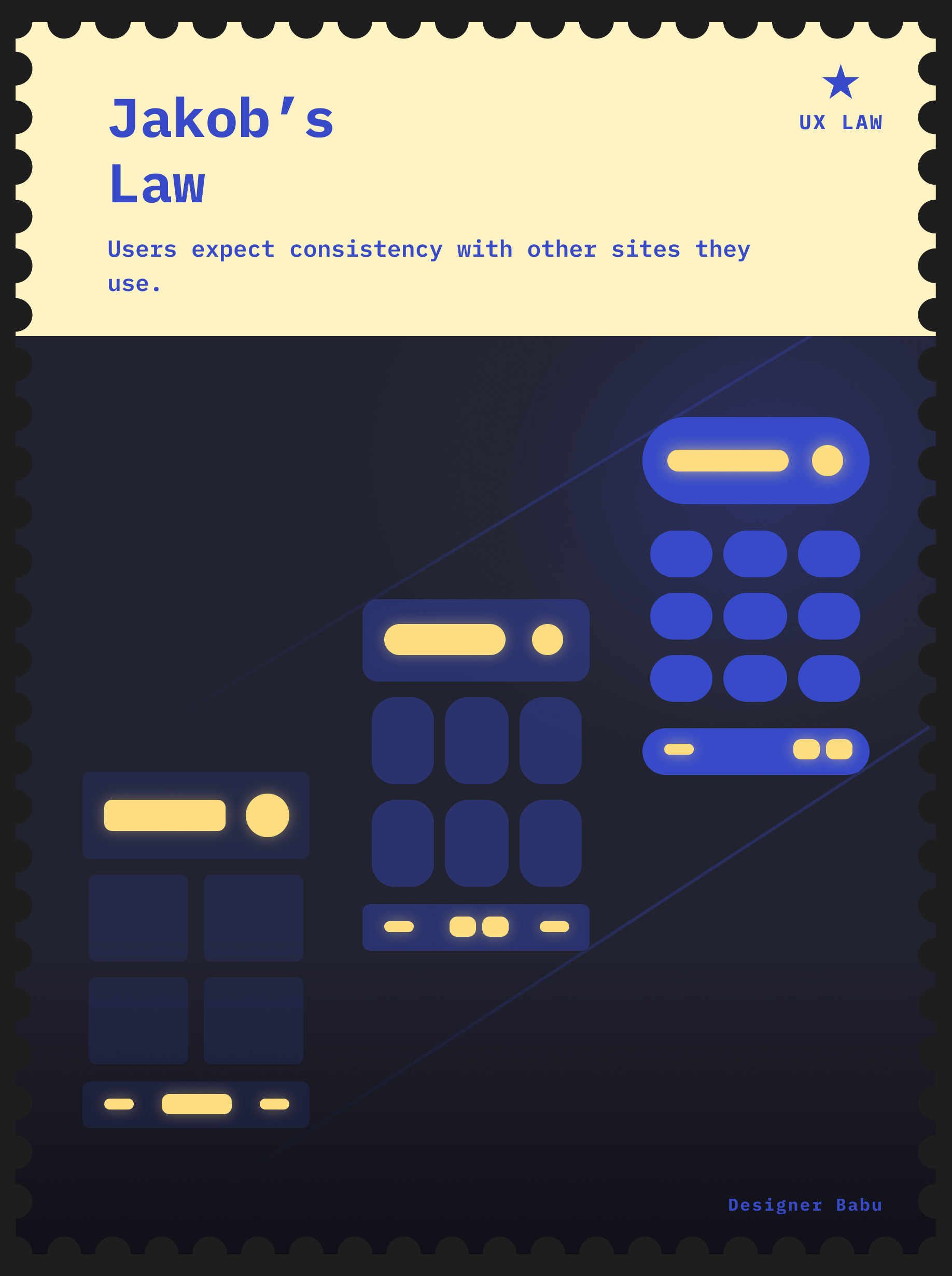
Imagine being accustomed to ordering coffee with the menu above the counter, and paying at the end. A new café with a different order flow might feel jarring and confusing. Jakob’s Law advises designers to use familiar patterns so users can navigate your site without re-learning how things work.
NOTE
Mental Models : A Design Essential
A mental model is a user’s internal representation of how a system or process works, based on their experiences, knowledge, and expectations. It influences how they predict system behavior and interact with it. Effective design aligns with users’ mental models to ensure intuitive interactions, reducing cognitive effort and improving usability.
4. Miller’s Law
People can hold about 7 (±2) items in their working memory.
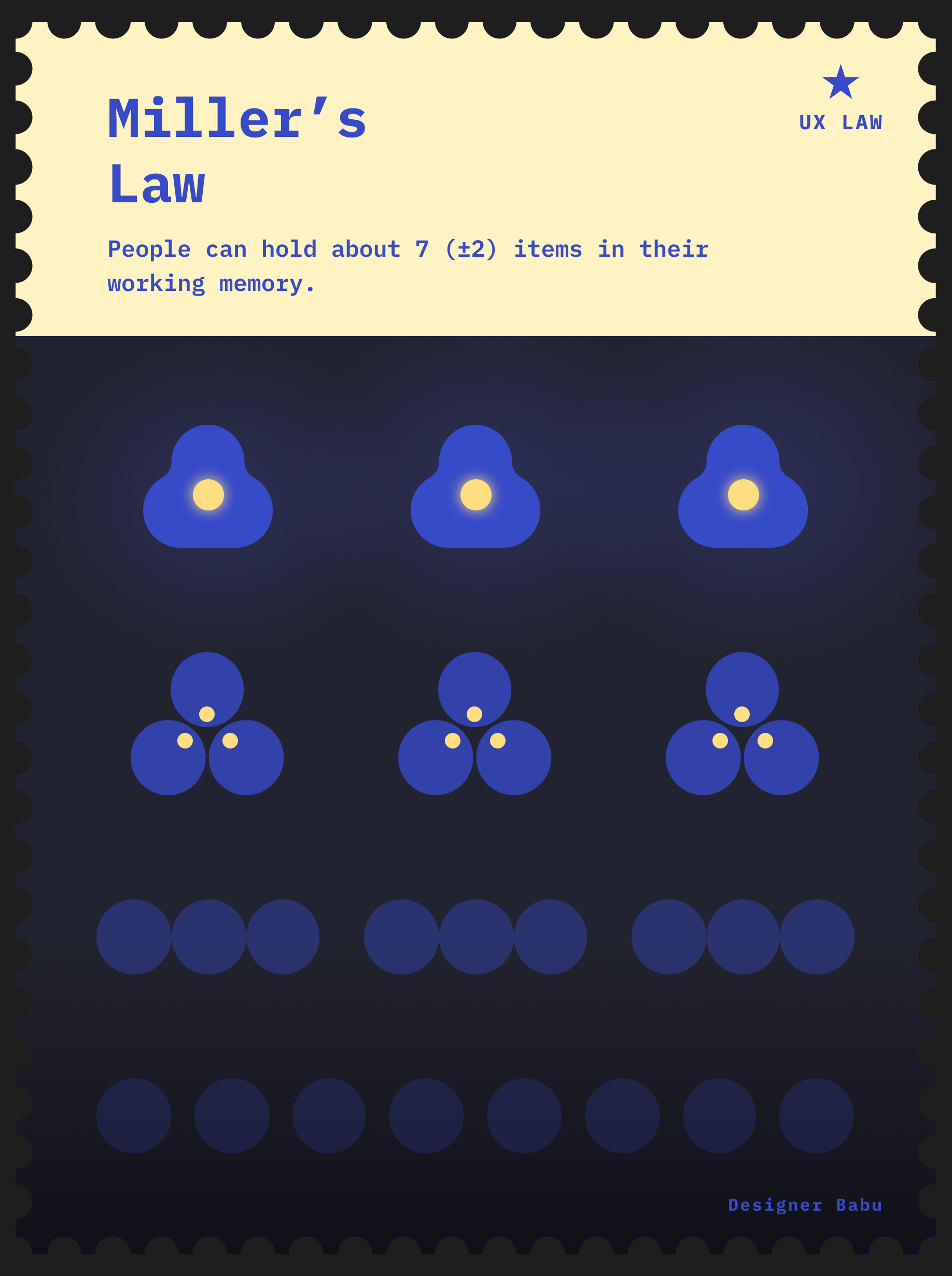
If a barista lists seven ingredients for a complex coffee drink, you might remember the first few but struggle with the rest. Miller’s Law suggests chunking information for easier processing. In design, breaking down content into digestible groups helps users retain and understand information.
NOTE
Chunking: A Design Essential
Chunking breaks down information into manageable parts, enhancing memory retention and reducing cognitive load. For example, phone numbers are chunked into smaller groups (555-123-4567) to make them easier to remember. In design, chunking helps users process complex information without feeling overwhelmed.
5. Peak-End Rule
People judge an experience based on its peak moment and ending.
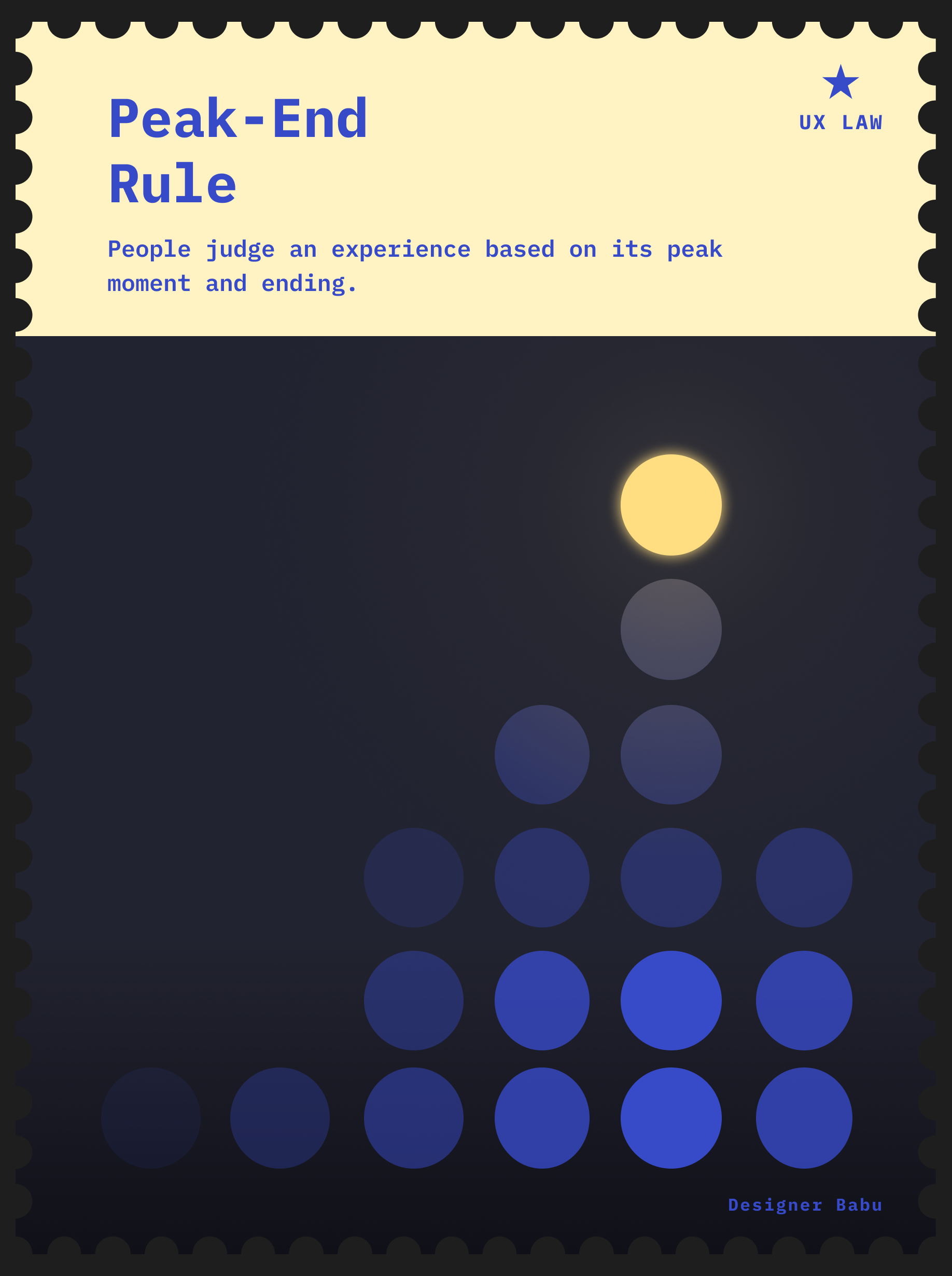
Think of a visit to a coffee shop. While you may not recall every detail, you likely remember the high points (like your favorite sip) and how the experience ended (a friendly goodbye). The Peak-End Rule encourages designers to create memorable moments and ensure a positive end experience, leaving a favorable impression.
6. Serial Position Effect
People remember the first and last items in a sequence better than those in the middle.
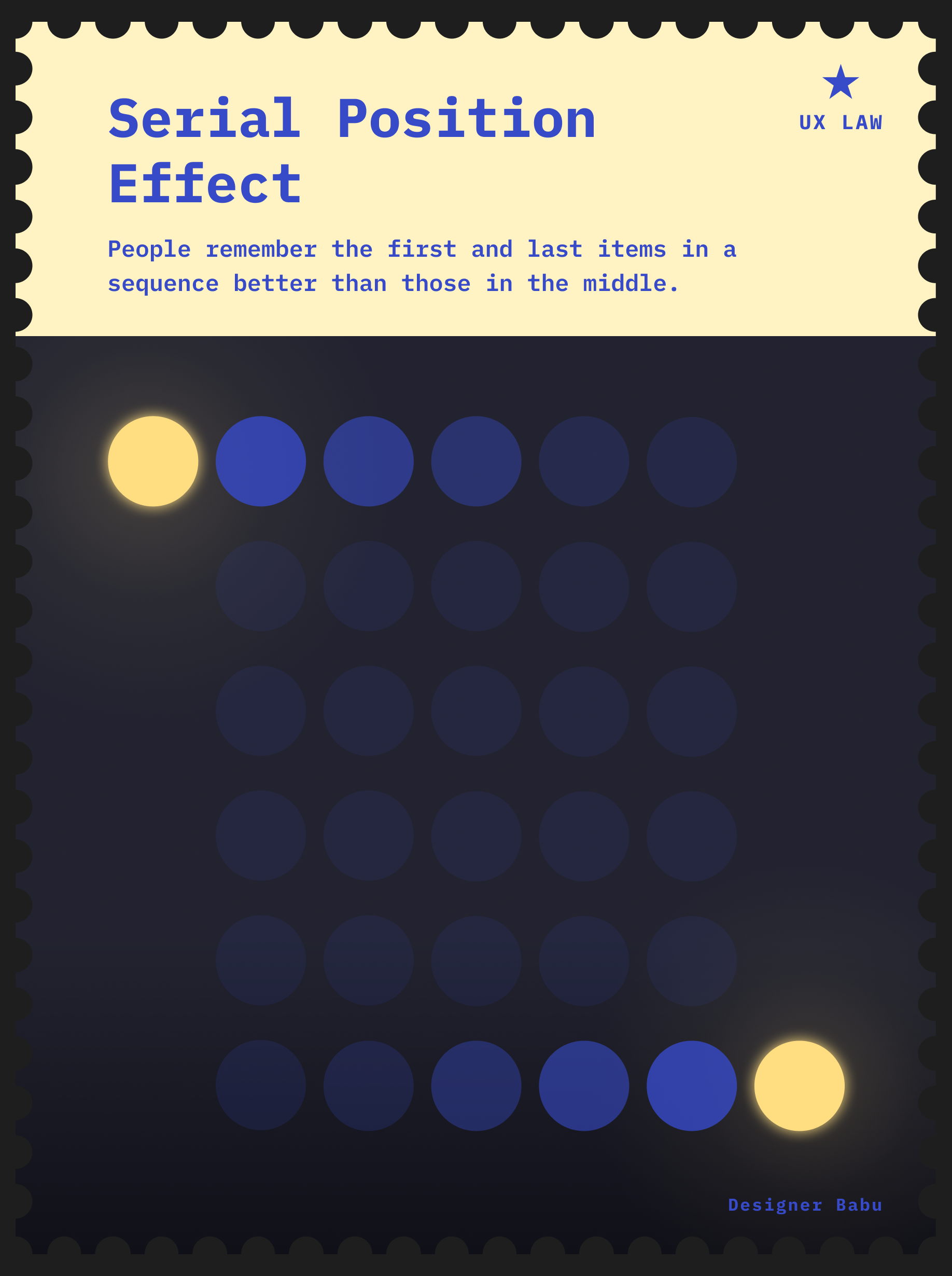
If you’re given a list of coffee shop recommendations, you’re likely to remember the first and last few shops mentioned. This effect suggests that key information should be positioned at the beginning or end, where it’s more likely to be retained.
Conclusion
Each of these UX laws can help you create intuitive, enjoyable designs by aligning with natural human behavior patterns. Keep these principles in mind as you build your designs they’ll serve as a roadmap for crafting experiences that feel natural, engaging, and satisfying for users.
As we continue this journey, remember that great design is not just about aesthetics. It’s about making life easier, more enjoyable, and more connected for every user you serve. So, let’s dive deeper into UX principles and unlock the potential for transformative design.

Leave a Reply